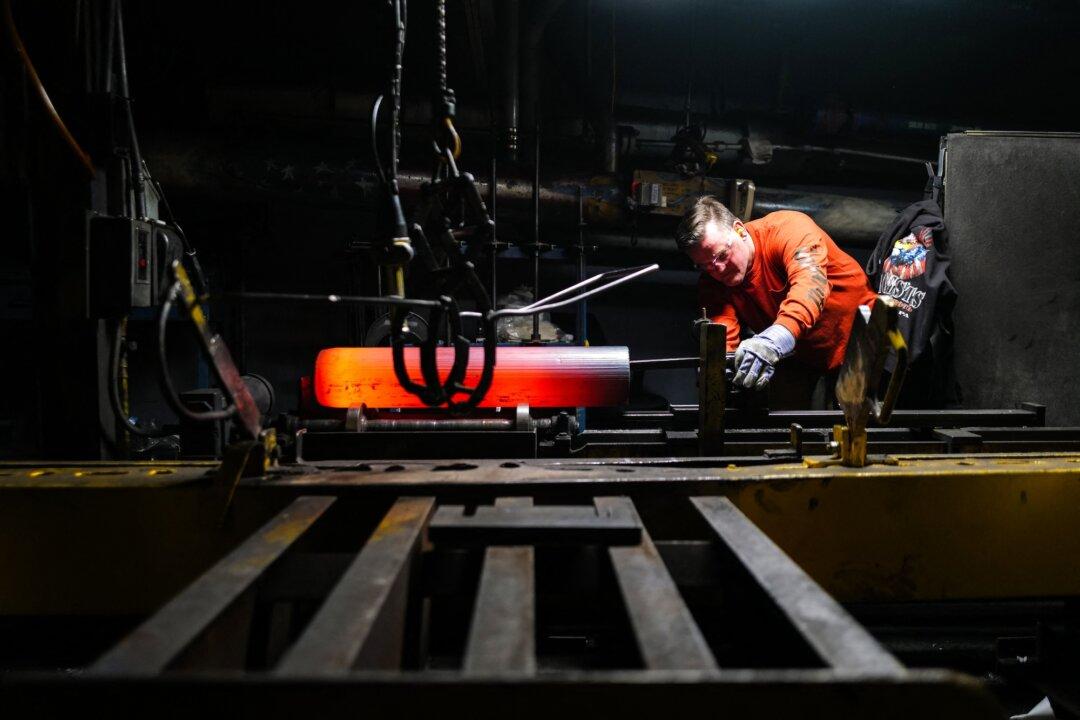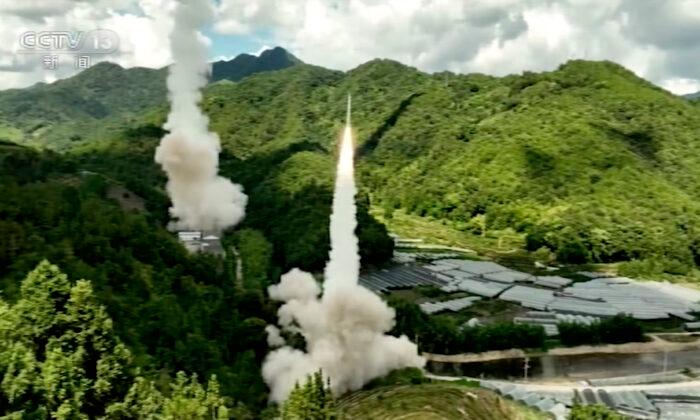While some experts assume that China and Russia would never enter a formal military alliance against the United States and its friends and allies, the two nuclear neighbors are now actively increasing the depth and scope of their military cooperation in ways that are improving their joint capacity to threaten U.S. security.
Air Exercises
On July 23, two Russian Air Force Tupolev Tu-95MS cruise missile bombers and two People’s Liberation Army Air Force (PLAAF) Xian H-6K cruise missile bombers conducted a joint exercise over the Sea of Japan. South Korean fighter jets responded by firing warning shots at a Tu-95MS flying over Dokdo Island.The Tu-95MS would usually be armed with eight 3,000 km- to 4,000 km-range Kh-101/102 land-attack cruise missile (LACM), while the H-6K carries six 2,000 km-range CJ-20 LACMs. Both cruise missiles could be armed with nuclear warheads, and both bombers can also carry supersonic anti-ship missiles and precision-guided bombs.
These bombers were supported by two airborne warning and control system (AWACS) aircraft, a Russian Beriev A-50 and a PLAAF KJ-2000, both of which are based on the Russian Ilyushin Il-76MD transport aircraft.
Inclusion of the AWACS enabled the bomber group to practice finding their own land- or sea-based targets, and it’s likely that targeting data from respective Russian and Chinese space-based and land-based sensors was shared by the AWACS and bomber aircraft.
Naval Exercises
From April 29 to May 4, following its 70th anniversary naval parade, the People’s Liberation Army navy (PLAN) and the Russian navy held their “Joint Sea 2019” naval exercise, for the first time featuring joint “live fire” launching of surface-to-air missiles and complex anti-submarine warfare (ASW) exercises.Russia sent its large Slava-class cruiser Varyag, seen below, armed with sixteen 550 km range P-500 nuclear-warhead capable anti-ship missiles, two ASW destroyers, and a Kilo-class conventional submarine. The PLAN sent its aging Type 052 destroyer Harbin, a newer Type 054A frigate, and a Type 039 conventional submarine.
Army Exercises
From Sept. 11 to 18, 2018, the PLA Ground Forces (PLAGF) sent a brigade-size force into Russia to participate in Russia’s large-scale “Vostok-18” combined-arms exercise.Strategic Exercises
In 2016 and 2017, China and Russia held “strategic forces” exercises to practice missile defense at a command-post level; there was no reported missile defense exercise in 2018.While Russian and Chinese missile interceptors weren’t fired, it’s likely that missile detection and interception command and control procedures were part of these exercises. Since the 1960s, Russia has maintained an anti-ballistic missile defense network while the PLA’s is now in a stage of advanced development.
This is troubling because missile “defense” exercises imply that China and Russia may also be considering missile “offense” cooperation. While Russia has about 1,500 deployed nuclear warheads, China’s number is unknown, but could approach the number of Russia’s warheads.
A potential danger is that China and Russia could engage in joint targeting of their nuclear forces to deter Washington from defending allies in Europe and Asia or partners such as Taiwan.
Though currently at an early stage, China–Russia operational military cooperation could develop rapidly with increased sophistication, size, and frequency of exercises so that both become a greater force for global intimidation.
Despite historic Russian fears of a strong China, the Putin regime may go along with increased military cooperation to sustain large-scale Chinese commodity and technology purchases that undergird the Russian economy.
China, however, wants Russia to become a more active military partner in conquering Taiwan and then very likely, for containing the democracies. Russian bombers, strike fighters, submarines, and ASW forces could help the PLA tie down Japanese forces or even to attack U.S. forces in Japan that would resist a Chinese attack.
In an interview published on July 18, U.S. Admiral Philip Davidson, commander of the U.S. Indo-Pacific Command, told the website Breaking Defense that in June, two Russian bombers circled Taiwan.
Building a growing military alliance-like relationship with Russia also advances China’s project of establishing global military networks to achieve global strategic hegemony by its 2049 deadline, as more countries may bandwagon with China.
Countering growing China–Russia military cooperation requires that Washington sustain its military and military-technical superiority, and ensure that its alliances and friends are both well-armed and better coordinated. U.S. forces urgently require new tactical nuclear weapons to deter Russian and Chinese aggression.
Furthermore, there should be no hesitation in arming frontline friends such as Taiwan and Japan with capabilities required to deter a combined China–Russia threat. Taiwan’s request for advanced F-16 fighters should have been approved years ago, while both Taiwan and Japan may require the hypersonic missile weapons and defensive energy weapons that the Trump administration is trying desperately to develop.






